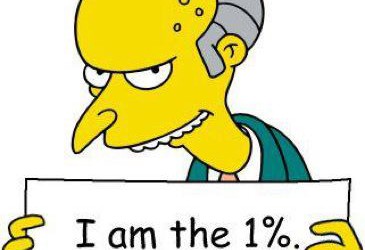by Aussie Firebug | Aug 19, 2015 | Financial Independence, Investing, Retire Early, Saving
It doesn’t matter if you’re 16 or 60. You are never too young or old to start planning for retirement, and if you’re crazy like me then you would have wished you had started planning from your early teen years. But how do you know when you can transition to retirement? To answer the common question of ” How much do I need to retire ” there are basically two things that you need to measure before we can use the retirement calculator.
How much do you spend?

And I don’t want to hear rough estimates here. In order to accurately measure and plan for retirement you gotta know exactly how much money you spend each year in order to live at your current life style. This does two things. Firstly it will give you a quantifiable number (needed for the retirement calculator). You can now accurately say that I need $X.00 amount of dollars to live my life as it is right now during this time in history. Notice I mention this time in history because inflation matters, for example someone living in 1970 might have been able to live off $5,000 that year. But they might struggle to buy just coffee for a year with that sort of cash now days.
Secondly you will become aware of where every dollar that you earn goes. And this is going to really open up your eyes trust me on that! Even for someone who has been financially responsible their whole life. When you track your spending religiously you see just how many holes you have in your pocket and that money is constantly flowing in the outwards direction for heaps of shit that doesn’t really improve your life, I’m looking at you alcohol/smokes/designer clothes. Plugging these holes is another post altogether so lets just stick with tracking money for now.
So how does one exactly track their spending accurately? Well there are a few different methods depending on how trust worthy you are. The first is to simply keep an excel spread sheet/journal and fill it out as you go. Export your bank statements to a CSV file and add each transaction on your statements to your spreadsheet with a date, transaction detail, amount in $ and a category column so you can break down what you spent your money on. Something like this will work
| Date |
Transaction Detail |
Amount |
Category |
| 05-Aug-15 |
BP Petrol |
$ 54.36 |
Car |
| 05-Aug-15 |
Safeway |
$ 26.10 |
Groceries |
| 07-Aug-15 |
Revolvers PTY LTD |
$ 281.52 |
Entertainment |
| 08-Aug-15 |
McDonalds |
$ 24.20 |
Food |
| 08-Aug-15 |
Safeway |
$ 35.10 |
Groceries |
|
|
|
|
| Total |
|
$ 421.28 |
|
And with a bit of excel magic you can create a pie graph of your 3 day bender.

The other alternative (my preferred method) is to get browser based software to do this for you for free. There are a number of different Australian options you can choose from: Pocket Book, ANZ Money Manager and for any US readers I’m sure you have already heard of Mint. They all do basically the same thing when it comes to categorizing your transactions. You can log into your online banking and export data between two different dates and then upload it into the software. Once there the software will automatically try to categorize transactions based on common names in the transaction details. For example if the transaction detail has Woolworths in the description than odds are that this transaction should be categorized as groceries. You can always manually go through them to make sure that they are right, and the software is smart enough to remember your changes in case it gets it wrong first time. The only down side to this is that you have to export your data and upload it every time you want up to date info. To make this easier you can add you banking details to the software that enables it to have read only access to your data. This means that the software is always up to date with your transactions without you having to export/import all the time. If you are worries about security you can read up how it works here.
Once you have all your transactions in the software and categorised correctly you can really start to paint a picture on how much you spend and what you spend it on. Pocketbook has a great feature called ‘Analyse’ that creates a pie chart for you between two dates and splices it up based on categories. You can then deselect certain categorie and the pie chart will automatically re-size and show you what your spending would look like without that category for that week/month or whatever the time frame is that you’re measuring. It’s a really easy and quick way to sift through all the junk and find out how much you can actually live off without all the bells and whistles.
Now the last part to this question is all about that cash flow baby! How much does your investments make you? This can be a bit tricky because it depends on what you invest in and how volatile it is. Lets just assume that you are getting a solid return of 9% per annum forever with no fluctuations. Highly unlikely but for the purposes of this example lets just go with it. How much will you have to have invested before your portfolio generates your annual expenditure? Just plug in your figures to the following formula
E / R = FI
E = Yearly expenditure
R = Return rate as a percentage
FI = Financial Independence
Example: I spend $45,730.87 dollars and my rate of return from investments are 9%
$45,730.87 / 0.09 = $508,120.77
So based on the above I would need a portfolio valued at $508.120.77 that returns 9% per year and I would never have to work again!… Not quite. Inflation is the silent killer here. The Reserve Bank of Australia’s (RBA) inflation target is 2-3 percent, lets just use 2.5% for our calculations. We need to minus this percentage from our return rate of 9% and redo the formula.
$45,730.87 / 0.065 = $703,551.84
God dam inflation. Factoring inflation in has just increased our hypothetical FI number by nearly $200K 😐 … This is an evil necessarily though because it will enable your portfolio to grow along with inflation, enabling you to have the same purchasing power in 30 years time as you do today.
I have not covered everything* here but it should give you a basic idea of how to start calculating your FI number. Have a play with the retirement calculator below and see how drastic some simple changes can be such as lowering your living costs by as little as 5K or how much an impact your FI is affected by rate of return.
[CP_CALCULATED_FIELDS id=”6″]
*All calculations have not factored in tax because it’s just too hard to cover all aspects. You should be calculating using after tax money
by Aussie Firebug | Aug 14, 2015 | Investing, Net Worth, Saving
Net worth had a big jump last month (+$21,000) after both my properties got revalued and completing my tax return which showed that I had knocked off about $7,000 off my HECCS debt. July has seen a seen a steady increase of around $4,500 from pure cash savings.

by Aussie Firebug | Aug 14, 2015 | Financial Independence, Mindset, Retire Early, Saving
Do you ever sit at work, stare blankly into the monitor and wonder how much better your life would be if you didn’t have to be there? I often drift off into a day dream where I visualize that I’m financially free and am doing whatever I want. Making more than enough money from my investments that allow me to break the shackles of modern day slavery (a job). I usually start my Monday mornings plotting out my plan to escape the rat race to do whatever I feel whenever I feel and not have to worry about money.
After a while I usually whip out the windows calculator and start to do some calculations based on my returns from my portfolio so far (terrible analysis) even though I know that this is not the way you should forecast future returns but I don’t care. I start to compute how long I think it will take for me to reach the magical goal of financial independence…’if I make X% returns it’s possible I could be there in 5 years… but if this happens then that pushes it out to 10 years… if I get lucky with the market then it’s only 3 year…’ . I then go to www.timeanddate.com and start to plug those dates in and look at how long it will take me to reach that date. I firstly look at years then months then weeks…
This is not a healthy thing to do. I KNOW that I shouldn’t be counting down and rather trying to enjoy the work life right now and in 5-10 years I should be able to wake up one day and say ‘Hey you know what. I don’t actually need to go to work today, I make enough passive income from my investments that covers all my expenses plus inflation’. But I just can’t help it! Monday is always the worst day for me because it’s the start of the working week and I always reassess my life come Monday. I like my job, I like the people I work with and I get paid great for what I do, so what gives right? Why am I so obsessed with the idea of FI that I save over 70% of my net income and invest it? Because even though I have all these great things from my job it’s still a job that requires me to give up 38 hours a week. As much as I like my job I sure as hell wouldn’t do it for free. If I was a billionaire there ain’t no way I’m turning up to work come Monday morning. I would still drop by to see the people but I could think of over a 1000 things I’d rather be doing than sitting in front of a computer for 9 hours a day.
RING RING! My desk phone starts to ring jolting me from my beautiful fantasy back to reality. I quickly close the spreadsheets, websites, and calculator and return to being a corporate drone for the next 9 hours until a get to go home, only to wake the following morning to do it all again…
Does anyone else feel this way?

by Aussie Firebug | Aug 12, 2015 | Financial Independence, Retire Early, Saving
I recently got into a very interesting conversation the other day when I returned from my weekly Monday shopping trip to stock up on food for the rest of the week for work. I bought my usual item; Bananas, muesli bars, apples and other various foods/goods. Upon my return to work, I was questioned by one of my colleagues as to why I bought the cheapest brand of tissues. The answer for me is quite simple, I try to spend as little as possible on items that I deem are not greatly improved for every addition cent more that I spend.
I find a lot of food falls into this category but I also label tissues as an item that represents no more value to me whether I buy the 95c White Facial Tissues 224 pack (Home Brand) or the $3.87 three Ply Eucalyptus Extra Care Facial Tissues 140 pack.
Apparently, I’m in the minority here.
Almost everyone in the office agreed that they would spend the extra $2.92 to get the more expensive tissues even though they offered 37.5% less product than their Home Brand counterpart. It baffles me to even think about it, you’re paying more than FOUR TIMES the amount and you’re getting 37.5% less product… Now I do have to admit that the triple ply tissues are much better quality and smell lovely. But are they worth that extra 407% mark up?
Let’s look at this issue purely from a math point of view and on a much bigger scale.
I find that most people fall into the trap of paying extra for things that they don’t really need when the purchase is small. It’s easy to justify buying the more expensive tissues because it’s only around an extra $3 bucks rights? I mean what’s $3 dollars in the grand scheme of things?
WRONG ATTITUDE!
The correct way to judge two items is working out what is the difference in terms of percentage and not dollar amount. Let’s scale things up as an example.
Harry Hotrod needs to buy a new car and has narrowed down his search to two cars.
Car A is exactly what he’s after, it’s a bright red V8 Holden that already comes with a southern cross sticker on the back. But there’s only one problem. Car A costs $22,999 which is a little expensive for Harry.
Car B is good but not great, it’s a slightly older model that looks a bit tired. It costs $16,999 which is much more affordable for Harry. Lets for argument’s sake say that the two cars are completely the same except for looks and Car A has more comfortable cushions.
Harry is having a hard time choosing between the two cars because there is a humongous $6,000 dollar difference between the two cars. He likes car A better but doesn’t know if he wants to shell out the extra 6 grand for it. He decides to go with the finically smarter option and purchases car B even though it’s not as comfortable or cool.
As he is driving home, he swings by Coles to get some items which just so happens to include a box of tissues. He looks at the 95c White Facial Tissues 224 pack (Home Brand) and the $3.87 3 Ply Eucalyptus Extra Care Facial Tissues 140 pack. He decides to get the $3.87 3 Ply Eucalyptus pack as it looks much better and he doesn’t want to get a sore nose…

Let’s take a step back for one moment.
Harry only hours beforehand decided to purchase the cheaper car because he wanted to be financially responsible, yet he then buys the most expensive tissues on the shelf because it’s only an extra $3 bucks. While the difference between the two cars is significantly great in terms of dollar amounts, the percentages are a different story.
Car A is 135% more expensive than car B or if you want to look at it from a savings point of view, car B is 26% cheaper than car A. I cannot overstate this enough, a 26% savings rate is massive. HUGE. So I commend Harry for thinking with his head when picking between the two cars. Here is where it gets ridiculous. The cheaper tissues are 75% cheaper than the expensive ones… That’s not a typo. 75% cheaper AND you get 84 more tissues. I wonder if Harry would have even had to think twice if car B had been 75% cheaper than car A. At 75% less, that would make car B $5,749 dollars.
Now I can already hear what some of you are saying.
‘Yeah, so what. It’s still only saving around $3 dollars. Whoopie doo’.
If you apply this way of thinking to every little purchase you do it will add up very quickly. Lets, for example, say that you spend $100 dollars a week on groceries buying the cheapest of every item possible. If you apply the ‘It’s only 3$’ mentality and add the 407% markup on your $100 groceries, it turns into $407 dollars.
That’s a 307$ dollar difference. It gets worse.
With everything you buy or save you should be thinking in 10-year blocks. If you’re saving $307 dollars a week that means you have saved $15,964 a year or $159,640 a decade. $159,640 dollars!
Jesus Christ that’s a lot.
I mean, would you still prefer the softer, nicer smelling tissues if someone said that instead of the nice tissues you could buy the cheaper ones and in 10 years you would be $159K richer?
Of course, this is an extreme example and you’re definitely not going to get a 75% savings rate just by buying Home Brand on all items. But it demonstrates that saving $3 dollars here and there can add up very quickly and over a 10-year span can turn into a substantial amount of money. When tossing up between two items try to work out the rough percentage difference and then spend accordingly. I sometimes splash out items that are 300% + percentage dearer than another alternative. But I limited these items to once offs or special occasions and most definitely not staple items.
If you apply this way of thinking to all your purchases and not just the expensive ones you will see a big increase in the amount of money you save each week. You can then put this extra cashola to work by investing it and inching one step closer to freedom.









